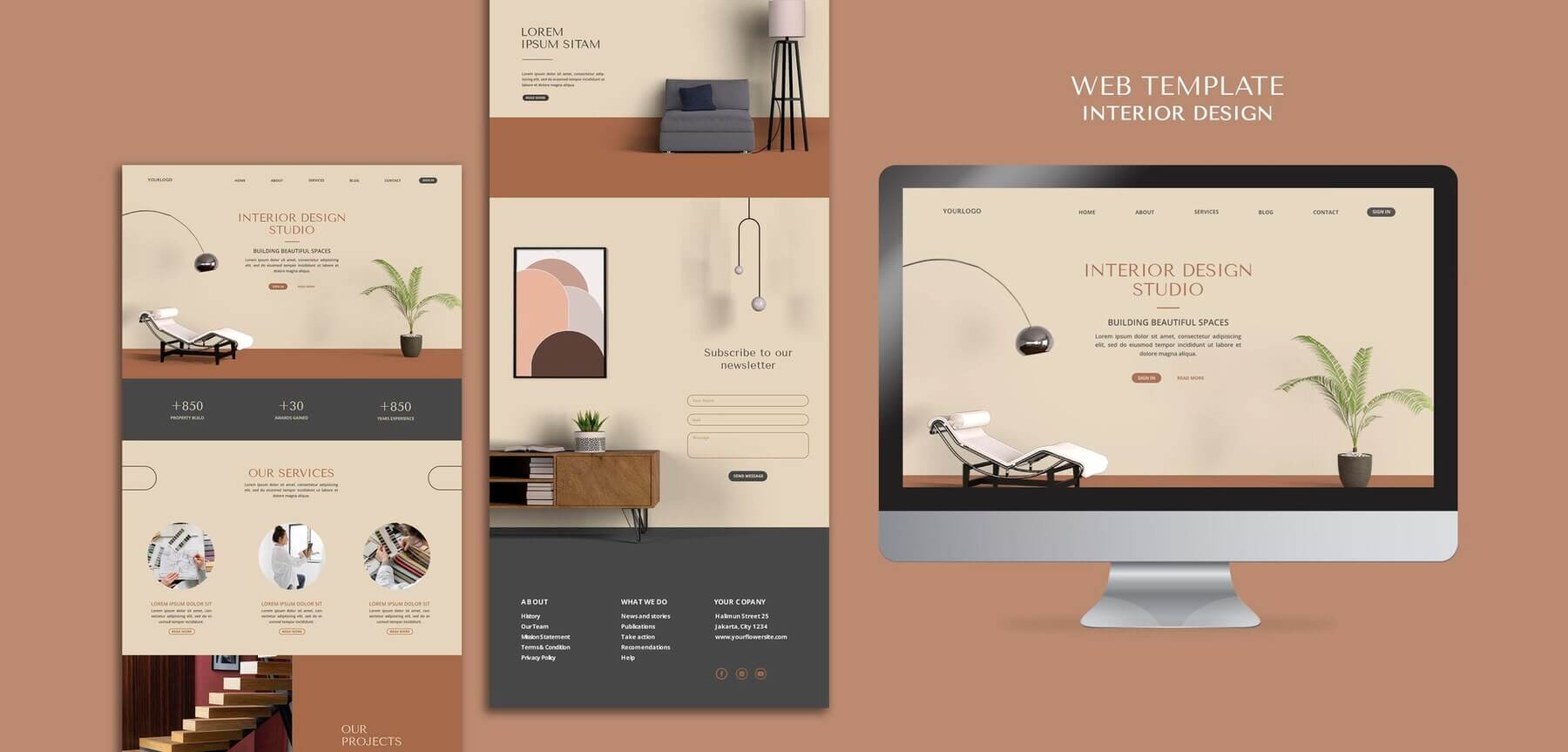Unlock the power of seamless design integration with Figma, revolutionizing WordPress theme customization. Effortlessly translate your creative vision into pixel-perfect themes, bridging the gap between design and development like never before.

- Why WordPress theme customization?
- What are some challenges of customizing WordPress themes?
- Introducing Figma as a solution
- Key features of Figma that make it suitable for theme customization
- Creating Custom Designs in Figma
- Implementing Figma Designs for WordPress website
- TL;DR: Streamlining WordPress theme customization with Figma
Let’s delve into the marriage of WordPress theme customization and Figma. Exploring how this dynamic duo streamlines the customization process, empowers designers and developers, and ultimately enhances the user experience.
From wireframing and prototyping to seamless integration with WordPress, we’ll uncover the myriad ways in which Figma elevates the art of theme customization, making it more intuitive, efficient, and visually stunning than ever before.
Whether you’re a seasoned designer looking to optimize your workflow or a WordPress enthusiast eager to unleash the full potential of your website, join us on this journey as we unlock the power of Figma in revolutionizing WordPress theme customization.
Why WordPress theme customization?
WordPress theme customization is essential for creating a unique and personalized website tailored to specific needs and preferences. While pre-designed themes offer convenience and functionality, customization allows for differentiation in design, branding, and user experience.
By tweaking layouts, colors, fonts, and functionalities, businesses, bloggers, and individuals can establish a distinct online presence. An online presence that reflects their identity and resonates with their target audience.
Furthermore, customization enables optimization for SEO, responsiveness across devices, and integration of desired features, ensuring a seamless and engaging user journey. In essence, WordPress theme customization empowers users to transform their website into a powerful tool for communication, promotion, and interaction in the digital landscape.

What are some challenges of customizing WordPress themes?
Let’s explore some of the challenges of customizing WordPress themes:
- Customizations might not always play well with other plugins or future updates to the theme or WordPress itself. Ensuring compatibility across different browsers and devices adds another layer of complexity.
- Poorly optimized customizations can slow down your website. It’s essential to optimize images, minify CSS and JavaScript, and follow best practices for performance to ensure a smooth user experience.
- Keeping track of changes and managing version control, especially if you’re working on a team or collaborating with other developers, can be complex without proper procedures in place.
- Customizations can introduce security vulnerabilities if not done correctly. For example, insecure coding practices or not sanitizing user inputs can lead to security breaches.
Despite these challenges, with patience, practice, and attention to detail, you can overcome them and create beautifully customized WordPress themes tailored to your needs.
Introducing Figma as a solution
Let’s take a look at Figma as a solution for customizing WordPress site themes. By integrating Figma into the workflow, designers can seamlessly collaborate with developers to create visually stunning and fully customized themes.
Figma’s intuitive interface allows for easy prototyping and iteration, enabling designers to experiment with various design elements and layouts. With its real-time collaboration features, teams can work together in real-time, streamlining the design process and ensuring that the final product meets both aesthetic and functional requirements.
By leveraging Figma’s capabilities, designers can transform WordPress themes into unique and tailored experiences that resonate with their audience, ultimately enhancing the overall user experience of the website.
Key features of Figma that make it suitable for theme customization
Let’s explore the key features of Figma that make it a great option for creating custom WordPress themes.

Collaborative Design Environment
A Collaborative Design Environment (CDE) is pivotal for WordPress theme customization, and Figma stands out as the optimal tool due to its seamless integration of collaborative features. In the dynamic landscape of theme development, where design iterations and feedback loops are constant. Figma’s real-time collaboration capabilities enable teams to work together fluidly regardless of geographic location or time zone.
This ensures that designers, developers, and stakeholders can synchronize efforts instantaneously, fostering efficiency and cohesion throughout the customization process. Moreover, Figma’s cloud-based platform facilitates version control, allowing teams to track changes, revert to previous iterations, and maintain a cohesive design history.
By providing a centralized space for collaboration, Figma empowers teams to streamline communication and iterate rapidly. Ultimately, deliver high-quality WordPress themes that meet both aesthetic and functional requirements.
Component-Based Design
Component-based design in Figma is a game-changer for customizing WordPress themes. Figma’s component system allows designers to create reusable elements, such as buttons, headers, footers, and more, which can be easily replicated and modified throughout the design process. This approach fosters consistency across the entire design, ensuring that every element maintains the same style and functionality.
For WordPress theme customization, this means that designers can create a library of components representing different parts of the website, such as postcards, navigation bars, or comment sections. These components can then be used and customized across multiple pages and layouts within the theme.
Moreover, Figma’s variants feature enables designers to create multiple versions of a component, accommodating different states or styles, such as hover effects or active states for buttons. This flexibility allows designers to cater to various design requirements without having to recreate components from scratch.
Interactive Prototyping
Another valuable feature is prototyping on Figma to customize your WordPress design. Using Figma to prototype for customizing WordPress design offers a multifaceted advantage to designers and developers alike.
Figma’s intuitive interface and collaborative features allow for seamless brainstorming and iteration, enabling teams to translate conceptual designs into tangible prototypes swiftly. By integrating Figma with WordPress, designers can efficiently visualize their ideas in a realistic environment, testing layouts, functionalities, and user experiences before committing to code implementation.
With Figma’s robust prototyping capabilities, teams can swiftly iterate through various design iterations, ensuring that the final product meets both aesthetic and functional requirements. This symbiotic relationship between Figma and WordPress empowers creatives to visualize and fine-tune their designs with precision and efficiency. Ultimately delivering an exceptional user experience.

Streamlines the handoff process between designers and developers
When handing off theme files from the designer to the WordPress developer, Figma makes it easy. Firstly, Figma provides a collaborative environment where designers can create pixel-perfect designs, including layouts, styles, and interactive components.
This allows designers to convey their vision accurately, ensuring that developers have a clear understanding of the design requirements. Furthermore, Figma’s real-time collaboration feature enables seamless communication between designers and developers, fostering a more efficient workflow. Developers can easily access design files, inspect design elements, and even leave comments or suggestions directly within Figma, eliminating the need for lengthy email exchanges or meetings.
Secondly, Figma simplifies the handoff process by generating code-friendly assets and specifications automatically. Developers can easily export design assets in various formats, such as CSS, SVG, or image files, saving valuable time and effort in manual asset extraction.
Moreover, Figma’s developer handoff feature provides detailed design specifications including:
- measurements,
- colors,
- typography,
- and component information
in a format that developers can readily utilize. This ensures consistency between the design and development phases, reducing the likelihood of misinterpretation or discrepancies.
Overall, Figma’s intuitive interface, collaborative features, and developer-friendly tools make it an invaluable asset in the custom WordPress theme development process. It streamlines workflow and enhances productivity for both designers and developers.
Figma Plugins and Integrations
Let’s briefly go over some Figma plugins and integrations. The first plugin is Anima. Anima allows you to convert Figma designs into responsive HTML, CSS, React, and Vue code. This can streamline the process of turning your Figma designs into functional components for your WordPress theme.
Another popular plugin includes Content Reel. Content Reel helps you manage and insert realistic placeholder content into your designs. While not directly converting designs to code, it ensures your design process is efficient and your mockups are realistic. Use Content Reel to populate your Figma designs with realistic data. This ensures that when you or your development team starts building the WordPress theme, the design is already optimized for real-world content.
We should also mention another popular plugin like Zeplin. Zeplin is a collaboration tool that provides a seamless workflow between designers and developers. It translates Figma designs into specs, guidelines, and assets that developers can use. After designing in Figma, export your design to Zeplin. Developers can then use Zeplin to access design specifications, assets, and code snippets, making it easier to implement the design into a WordPress theme.
These plugins and integrations offer various functionalities that can simplify and streamline the process of creating custom WordPress themes from your Figma designs.
Creating Custom Designs in Figma
Let’s explore creating custom designs for WordPress websites with the help of Figma.

Key steps in design creation
Let’s explore some of the key steps in the Figma design-building process. Designing in Figma involves a structured process that starts with setting up the project and progresses through various stages to the final handoff. First off, you create a new file and organize your workspace with frames and layout grids. Next, you want to do some research and planning that involves gathering user requirements and analyzing competitors.
Wireframing comes next, focusing on creating low-fidelity sketches to outline the basic structure. It’s essential to establish a design structure. This way you can define styles and reusable components for consistency. High-fidelity design follows, transforming wireframes into detailed mockups with applied styles.
The next step in this process is prototyping. Prototyping allows for adding interactions and defining user flows. Figma allows for collaboration which is a key aspect of this process. Designers can implement real-time edits, comments, and feedback loops. Iteration involves refining the design based on feedback and conducting user testing.
The final steps include preparing for development by generating design specs and exporting assets, followed by a quality check and obtaining stakeholder approval.
Best practices to consider for custom theme design for WordPress site
Let’s explore some best practices to consider for custom theme WordPress development. Designing a custom theme for a WordPress site involves both creative and technical best practices to ensure the theme is functional, aesthetically pleasing, and easy to maintain.
Some best practices include:
- Create wireframes and mockups to visualize the design before development.
- Ensure the theme is mobile-friendly with responsive design, using media queries and flexible grids, and prioritize user experience by designing intuitive navigation and interfaces with clear calls to action.
- Follow web accessibility guidelines to make the site usable for people with disabilities, using semantic HTML and ARIA roles to improve screen reader compatibility.
- Write clean, organized code adhering to WordPress coding standards
- Through the WordPress dashboard, we can access plugins such as Gutenberg or Elementor page builder which can help us convert a design into WordPress pages.
- Understand and use WordPress template hierarchy for efficient theme structure, and create reusable template parts for components like headers, footers, and sidebars.
By adhering to these best practices, you can create a custom WordPress theme that is visually appealing, robust, secure, and user-friendly.
Do you want to check the health of your website?

Implementing Figma Designs for WordPress website
You can implement your Figma design to your WordPress website with the help of our convert Figma design services. We can streamline the development process and ensure a seamless design and implementation transition.
These services typically involve skilled professionals who specialize in converting Figma files into HTML, CSS, and other web-friendly formats compatible with WordPress. By leveraging these services, you can transform your design mockups into interactive, pixel-perfect websites that accurately reflect your original vision.
One of the key benefits of utilizing Figma-to-WordPress conversion services is the preservation of design consistency and responsiveness. Design elements such as:
- layouts,
- typography,
- colors,
- and imagery
are meticulously translated into code, ensuring consistency across different devices and screen sizes. his attention to detail helps maintain the integrity of your design while ensuring optimal user experience across various platforms.
Additionally, these services often include optimization techniques to enhance website performance and loading speeds, further enhancing the overall quality and usability of your WordPress site. By entrusting the conversion process to professionals well-versed in both Figma and WordPress, you can expedite development timelines and achieve a polished, professional website.
Gain a fully functional WordPress website with the help of our Figma to WordPress conversion services.

TL;DR: Streamlining WordPress theme customization with Figma
Let’s summarise how you can streamline WordPress theme development with Figma designs. Figma offers an innovative approach to streamlining WordPress theme customization, providing designers and developers with a powerful toolset to collaborate effectively and efficiently.
By integrating Figma into your workflow, you can expedite the design process, and enhance communication between team members. Ultimately deliver exceptional WordPress themes tailored to your clients’ needs.
Embracing this versatile platform not only saves time but also fosters creativity and precision, ensuring that your projects stand out in an ever-evolving digital landscape.
So why wait? Take the plunge into the world of Figma and discover the countless possibilities it offers for enhancing your WordPress theme customization process. If you want to learn more about Figma to WordPress site services, drop us a line, and let’s chat. Our WordPress agency can help bring design files to life through conversion & web development services.
Comments